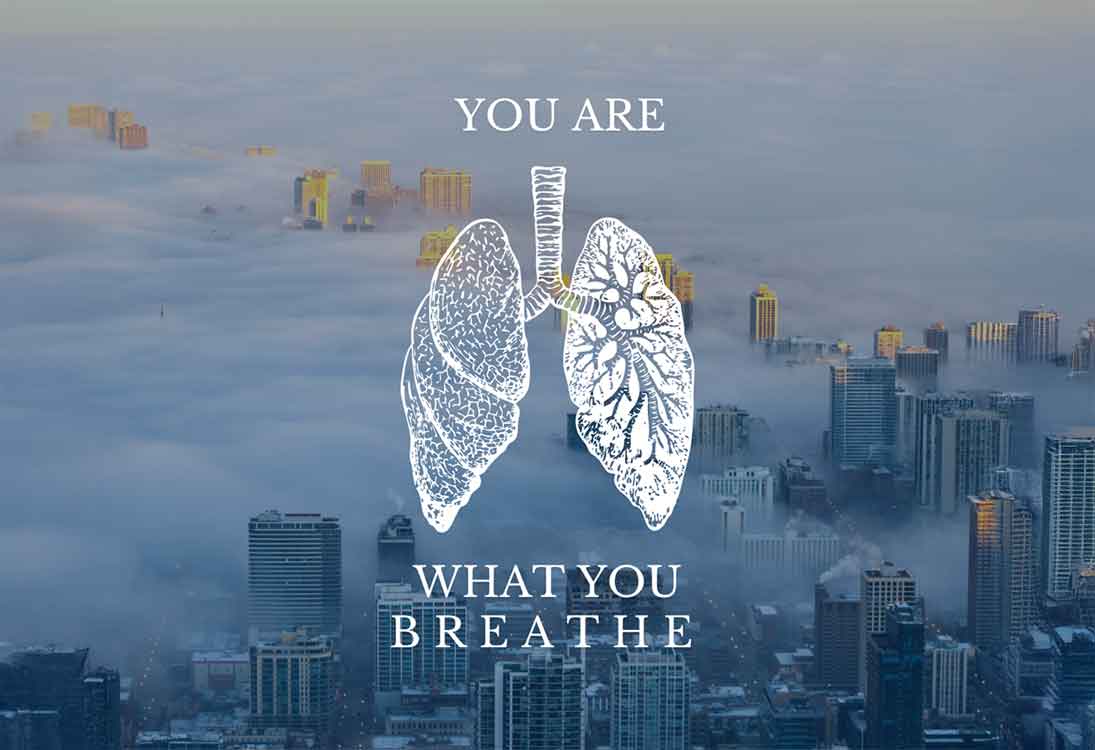For years, functional medicine has focused heavily on the gut when it comes to autoimmune disease—and with good reason. The gut is a primary immune interface with the outside world, and intestinal permeability is a well-established mechanism in the development of autoimmunity.But as we continue to deepen our understanding of immune function, it becomes clear that focusing exclusively on the gut is too narrow. Autoimmune disease doesn’t require intestinal permeability—it requires barrier permeability and immune dysregulation. And one of the most overlooked barriers? The lungs.
Rethinking the Role of the Respiratory Tract
The lungs and sinuses were long thought to be sterile. But with advanced genetic sequencing, we now understand they house complex and diverse microbial communities—the sinus and lung microbiomes. Like the gut, these ecosystems play an active role in immune regulation, pathogen detection, and maintaining tolerance.
Every day, we inhale 7,000+ liters of air filled with microorganisms, toxins, and particulates. These exposures directly interact with the mucosal immune system of the lungs and upper respiratory tract. And when that barrier is compromised—through pollution, infections, or chemical exposure—the immune consequences can ripple systemically.
Environmental Stressors, Oxidative Damage & Autoimmunity
The lungs are uniquely vulnerable due to their large surface area, constant environmental contact, and high-oxygen environment. When exposed to environmental stressors like air pollution, smoke, or household chemicals, the lungs produce oxidized and damaged proteins, lipids, and nucleic acids.
These altered molecules can:
- Escape into systemic circulation
- Trigger immune responses
- Break immune tolerance
- Promote the production of autoantibodies
Over time, this process may initiate or exacerbate autoimmune disease.
Key Mechanisms:
- Citrullination: Environmental exposures (e.g. smoking) or infections can trigger enzymatic conversion of arginine to citrulline in proteins. These altered proteins can break tolerance and lead to autoantibody production (e.g. anti-CCP in RA).
- Haptenation: Small chemicals (like those in cleaning products or medications like amoxicillin) bind to proteins, creating hapten-carrier complexes. These modified proteins are no longer recognized as self and trigger immune responses.
- Molecular Mimicry: Pathogens like CMV or mycoplasma contain sequences similar to human tissue. The immune system mounts a response against the pathogen but mistakenly attacks human proteins with shared sequences (e.g. GAD in T1D).
The Lung Microbiome and Immune Regulation
The sinus and lung microbiomes influence immune function just like the gut does. Disruption (dysbiosis) in these ecosystems can:
- Alter immune signaling
- Increase susceptibility to infection
- Impact tolerance and inflammation systemically
The concept of the “community as pathogen” describes how a microbial environment—not just a single microbe—can influence pathogenicity. This is a key model in understanding respiratory-driven immune dysregulation.
Even the behavior of resident microbes is shaped by their environment. When microbial balance is disturbed, inflammatory signaling may increase despite the absence of an overt pathogen. Robyn refers to this as the “peer pressure” model.
Clinical Considerations: The Unified Airway Model
The upper and lower respiratory tracts are functionally connected. Inflammation in the sinuses can affect the lungs and vice versa. The Unified Airway Hypothesis recognizes that immune or microbial changes in one area often affect the other. This matters when:
- Chronic sinusitis or allergies precede autoimmune symptoms
- Asthma co-exists with systemic inflammatory conditions
- Environmental exposures exacerbate both respiratory and systemic symptoms
As functional medicine practitioners, this model prompts us to ask: What came first? Was it the gut, the lungs, or both?
Case-in-Point:
A patient presents with asthma, joint pain, and chronic fatigue. Their gut function looks reasonable, but they have a history of smoking and recurrent sinus infections. Is it possible that the lung was the original source of barrier dysfunction and immune dysregulation?
The Inhalation-Inflammation-Autoimmunity Cascade
Inhaling environmental stressors causes:
- Barrier injury to the respiratory mucosa
- Oxidative stress within lung tissue
- Production of modified proteins, lipids, and nucleic acids
- Immune recognition of altered self (loss of tolerance)
- Autoimmune activation
These molecules can be detected systemically (e.g. lipid peroxides, 4HNE, oxidized LDL, 8-OHdG) and may precede or parallel the rise of autoantibodies.
In SLE, for example, oxidative modification of the Ro60 protein may precede anti-Ro antibody formation. Smoking is known to increase oxidative load, citrullination, and risk for RA and SLE.
Common Exposures that Contribute to Respiratory Barrier Breakdown:
- Cigarette smoke (active and passive)
- Spray deodorants, perfumes, sunscreens
- Incense and candles (even “natural” types)
- Cleaning products and aerosols
- Urban air pollution and particulate matter
These exposures don’t just affect the lungs—they may influence systemic autoimmune risk via the respiratory barrier.
Testing Considerations
- Cyrex Array 12: Extra-intestinal immune reactivity to respiratory pathogens (e.g., mycoplasma, strep, mold)
- Oxidative stress markers: Lipid peroxides, 8-OHdG, oxidized LDL
- Auto-antibodies: Anti-CCP, anti-Ro, ANA, phospholipid antibodies
Clinical Interventions: Supporting the Lung Barrier
Antioxidants & Immune Modulators:
- Vitamin E & Selenium: Inhibit lipid peroxidation
- NAC: Enhances glutathione, thins mucus, disrupts biofilms
- Alpha Lipoic Acid: Reduces cytokines, oxidative stress in lung tissue
- Glutathione (oral or nebulized): Improves lung detoxification & redox balance
Microbiome Support:
- Probiotics/Prebiotics (oral or topical): Modulate sinus/lung immunity
- Respiratory Hygiene: Air purification, humidification, nasal rinses
System Support:
- Consider systemic impacts of lung inflammation on brain, joints, and immune regulation
Final Thoughts
The lungs are not just passive air exchangers. They are active immune regulators and a significant interface with the environment. When their barrier is compromised, they can become a driver of systemic inflammation and autoimmunity.
As functional medicine practitioners, expanding our lens beyond the gut allows us to see the full picture. A healthy immune system is maintained through resilient barriers, robust microbial communities, and the ability to tolerate what we encounter in the world.
And when we lose that tolerance? Autoimmunity follows.
Coming soon: Practitioner-only newsletter updates on lung-focused testing and interventions. Join the list below.






